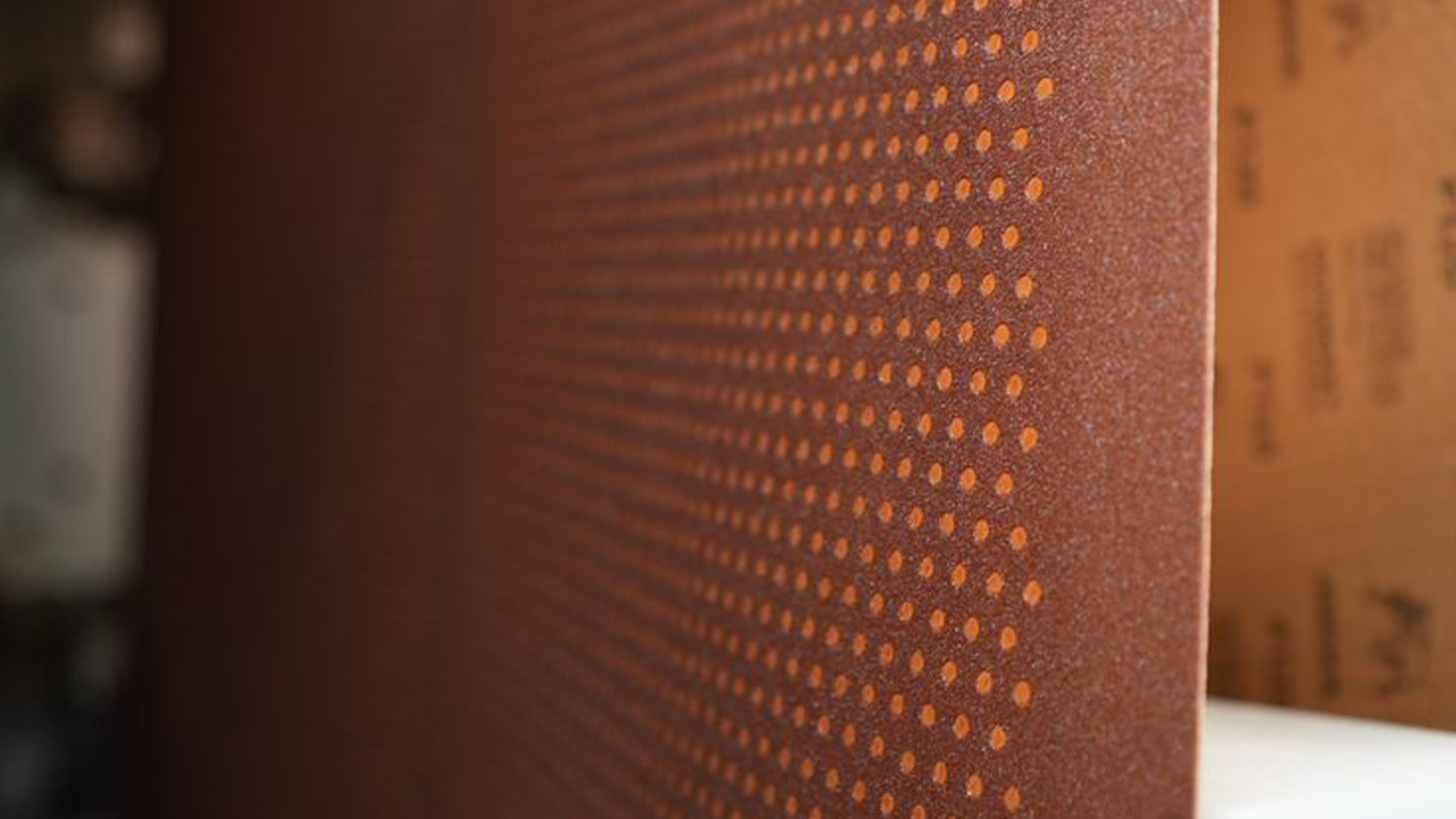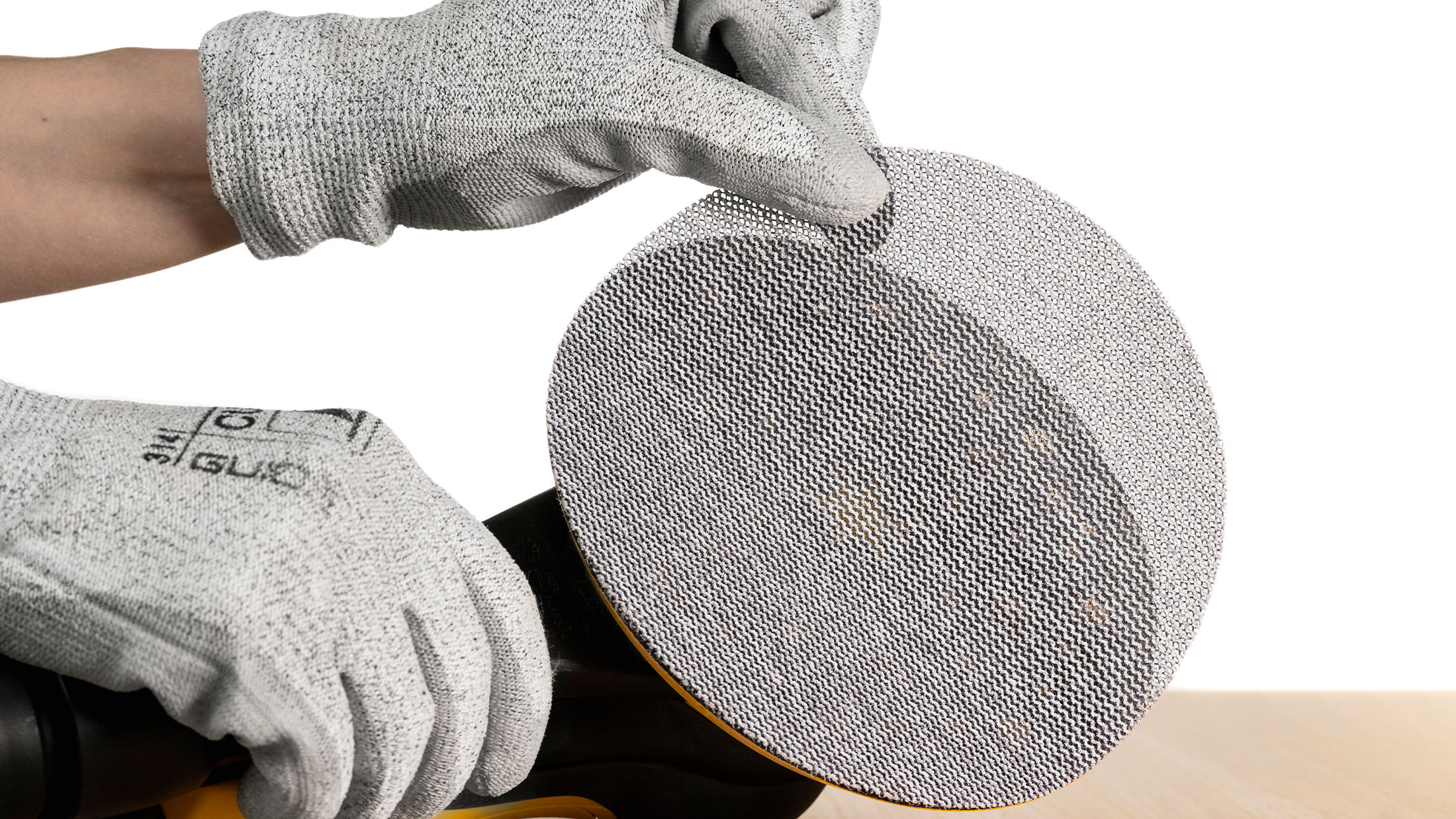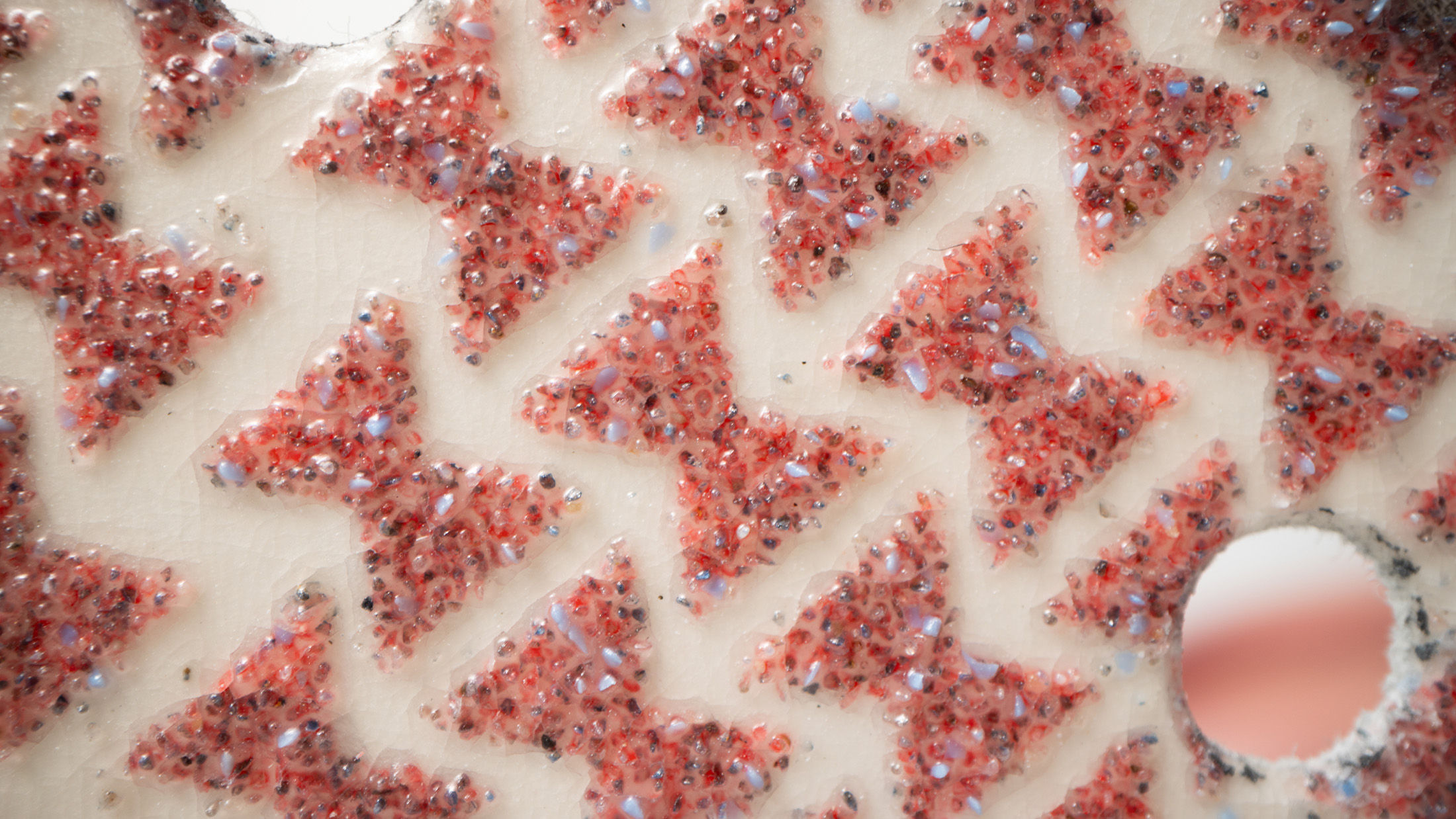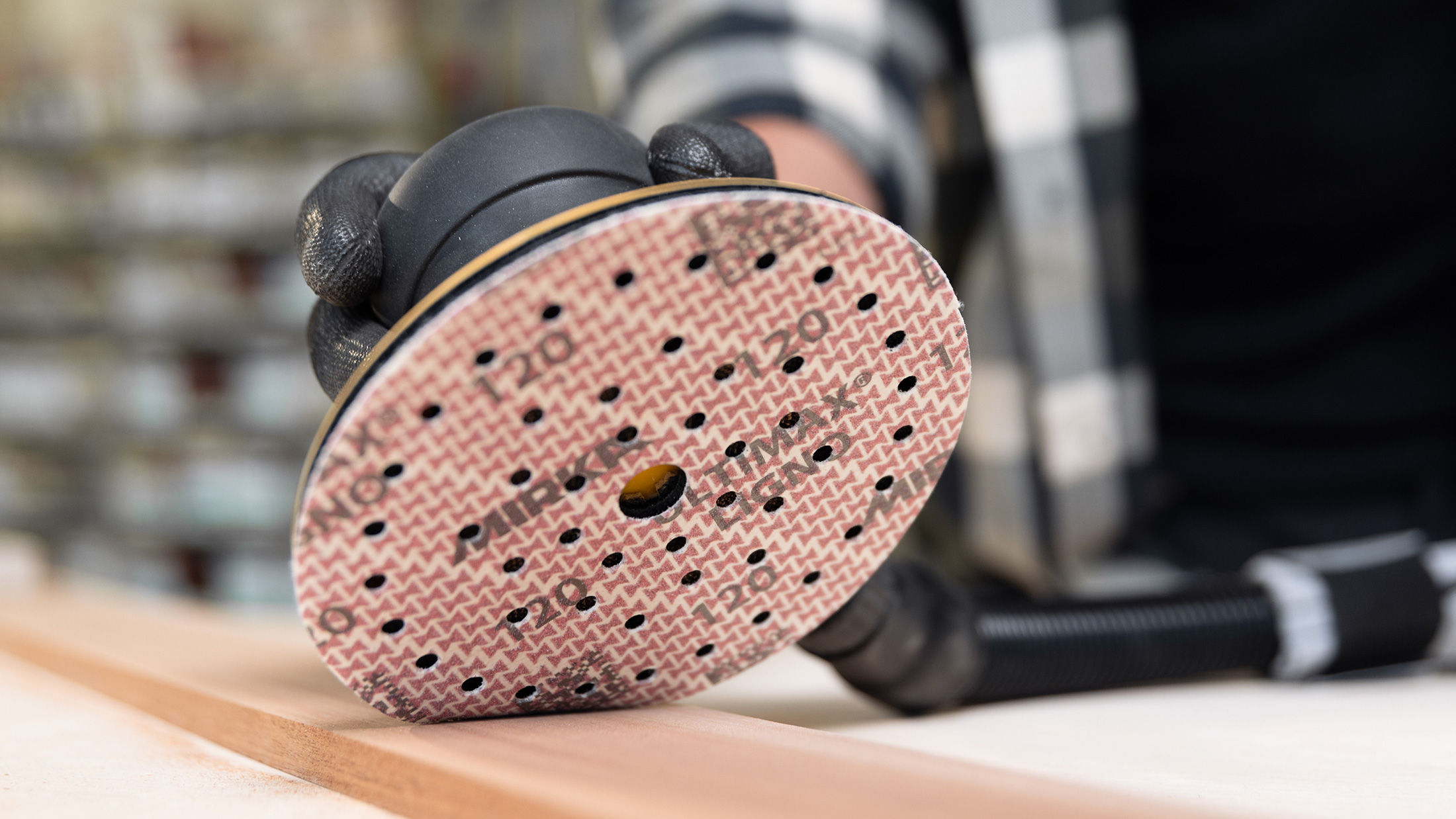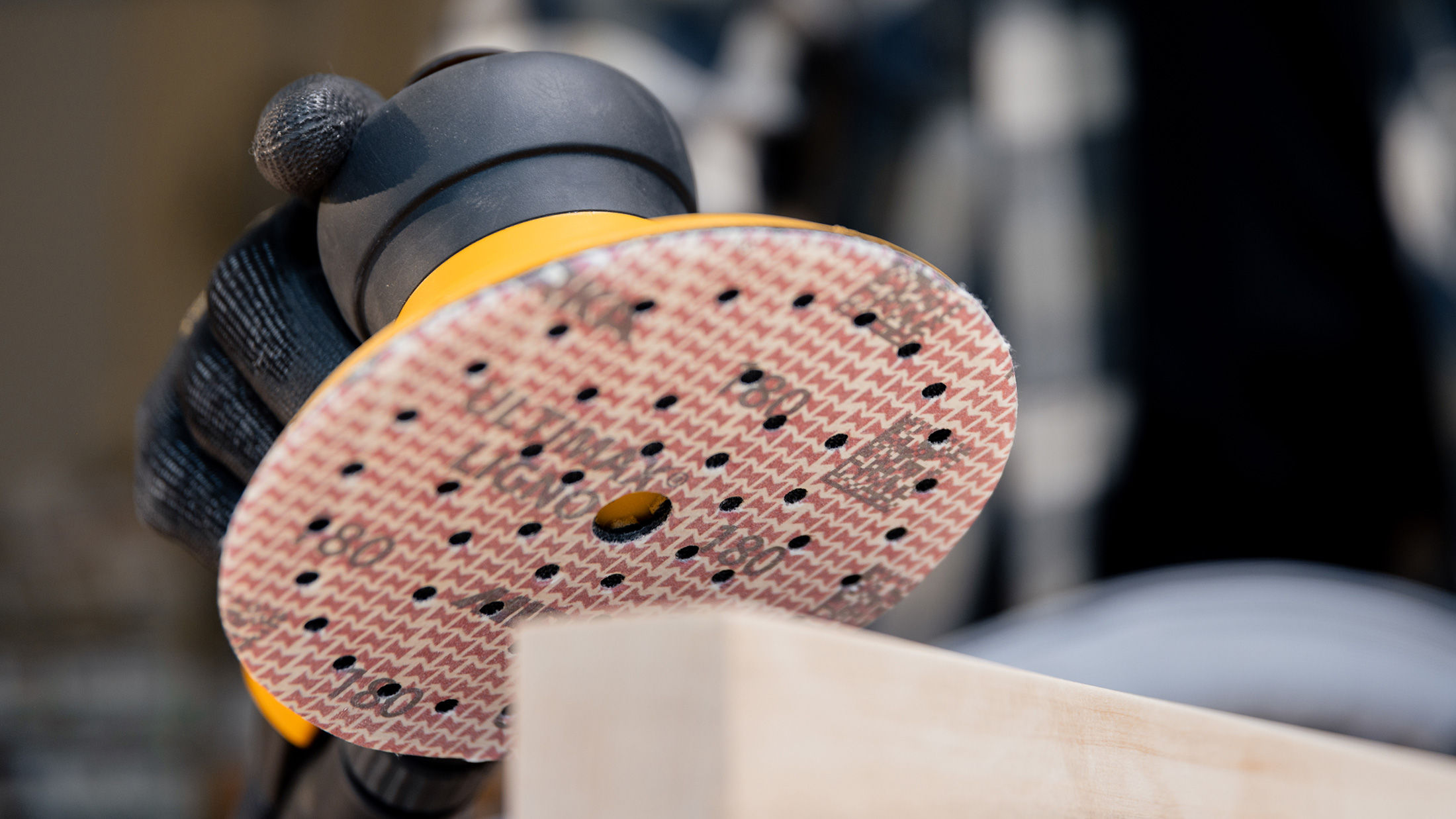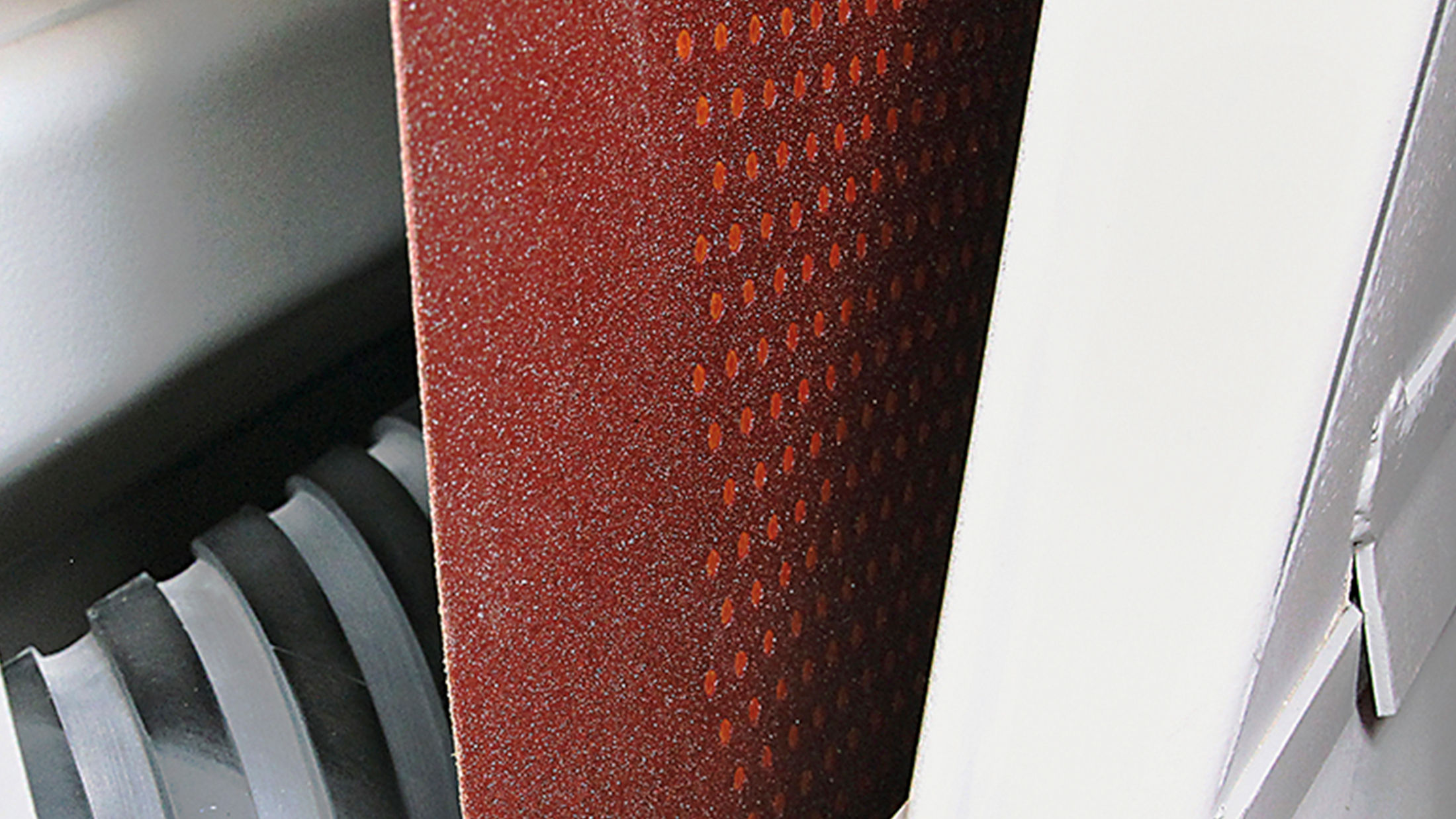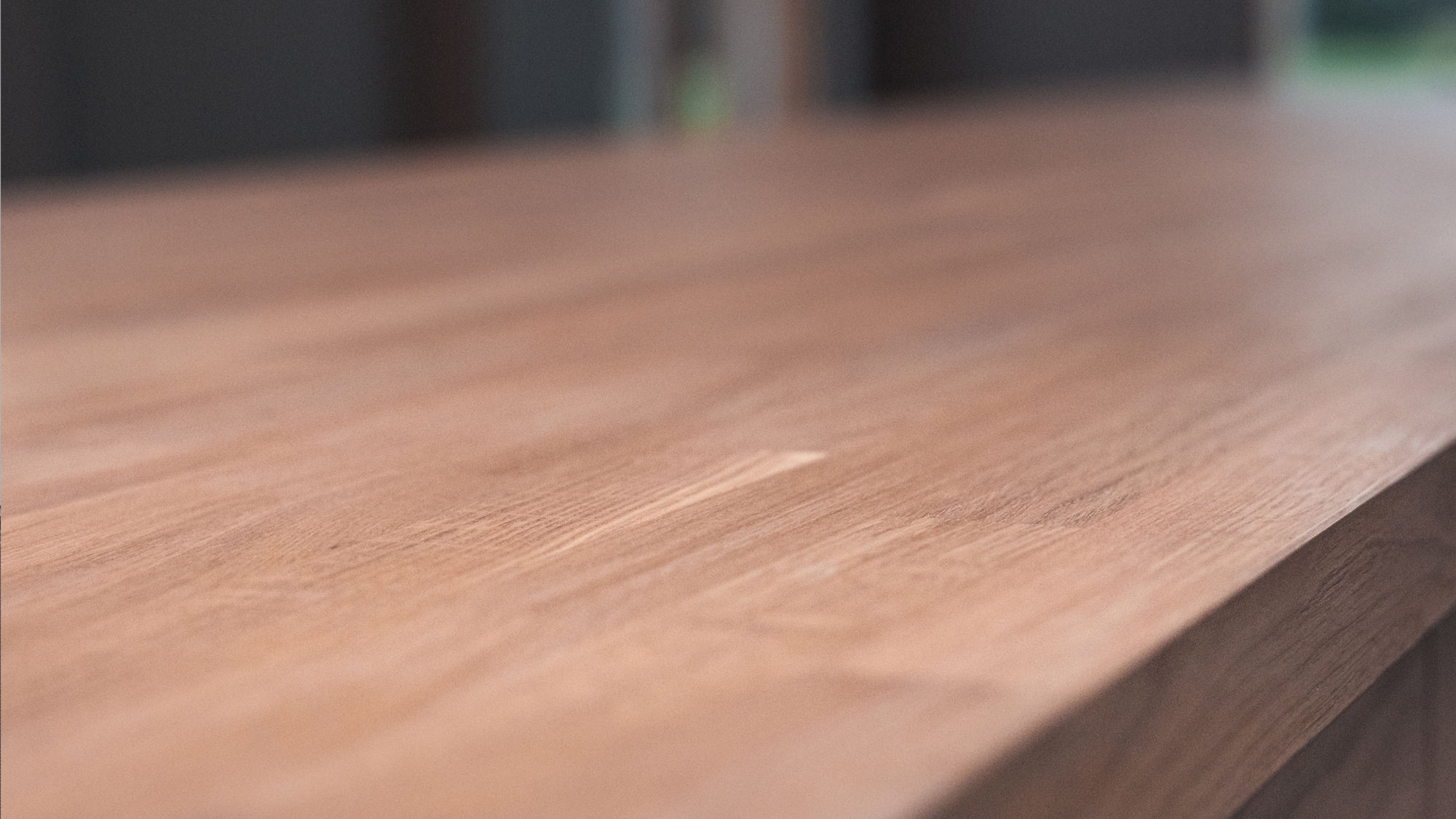Register Your Tool
All Mirka power tools have a standard two-year warranty. Get an additional 1 year of warranty free of charge by registering your tool within 30 days of purchase.
Keep your tools in excellent shape on myMirka where you can register your tools.
Replenish your stock, access marketing materials, view sales guides and read about upcoming product launches.
Every part of Ultimax® Ligno has been developed with wood applications in mind. There are so many benefits that make this abrasive ideal for wood. However, I would say that one of the most important features of the new Ultimax® Ligno Disc is dust extraction. The disc has been designed to pull the wood fibres across the disc's surface as easily as possible and prevent the disc from getting too hot. The biggest downside to sanding wood is that as you build the heat up, you can melt the resin that comes out of the wood and that's what clogs discs. With Ultimax® Ligno, the white channels don't have any grain on them at all. This allows the dust to move very quickly and smoothly along these channels towards the extraction holes. The dust moving so easily across the surface of the disc prevents the heat build-up that you would normally get in a traditional abrasive which means that the disc won't clog.
All in all, Ultimax® Ligno is the result of years of research at Mirka. The key benefit to the user is an unrivalled surface finish on wood substrate making the wood look more alive and leaving the perfect surface for subsequent coatings. In addition, Ligno has strong resistance to edgewear, minimal grain loss and remains free from clogging throughout use.
It’s the airflow. Ultimax® innovative wide belts have a series of tiny cavities which are specially designed into the abrasive material to promote airflow and reduce heat build-up which efficiently and effectively prevents clogging.
Good question! Ultimax® Ligno is not a replacement for Abranet®, I can see why you would compare the two products. In some ways they are similar, but their building blocks are different in every way. Ligno is a paper-backed abrasive with excellent airflow, which is very important for keeping the substrate cool; Abranet® achieves this cooling effect with the holes in the net. The grains are different – Abranet® is Aluminium Oxide, Abranet® Ace is ceramic, Ligno is a mix of both. Each product has a different resin system and manufacturing process. As with all abrasives, it comes down to specific applications. For some applications Abranet® or Abranet® Ace is the best choice, for others Ligno would be better. We offer free on-site demonstrations; I would recommend this as our technical experts can help identify which is best for your specific application.
The feedback we had from the wood sector end users has always been to get the best finish on the surface, so Ligno’s development needed to start with premium performance. Mirka created a new grain blend, a new backing paper and a new resin mix exclusively for Ligno as well as the printing pattern which has never been done before.
It’s a bold step forward that uses the power of innovation and technology to create a product line that stands apart in the market. Through meticulous testing and analysis, we've explored a wide array of patterns and sizes, all to enhance performance on wood surfaces.
We developed our own latex-impregnated paper for this product to achieve flexibility, good edgewear and flatness in combination with our new maker technology-C-paper. We use a ceramic and aluminium oxide grain blend which is perfect for cutting hardwoods or softwoods without clogging.
Interestingly, Mirka tested 64 patterns before deciding on the distinctive hourglass shape. It’s not just the right shape, but the right size to cut effectively while allowing airflow over the disc. That's only possible thanks to Mirka's grain printing technology. Through extensive testing, the R&D team discovered the ‘hourglass’ shape’s optimal cutting performance for wood sector substrates as it allows the disc to cut at every single part of the surface, ensuring exceptional sanding results.
Ultimax® Ligno features a strategically chosen Multifit hole pattern, eliminating the need for precise alignment. It is always correctly fitted without needing to align the abrasive to match the dust extraction holes specifically. This pattern effectively directs dust towards the holes located on the backing pad; you will notice that no dust gets passed the outer perimeter.
Ultimax® Ligno combines innovation with robust consideration for the environment. The production method reduces energy consumption, as the process for curing the glue is more efficient. It also has superior adhesion with VOC-free resin, ensuring a safer and healthier choice for both users and the environment.

